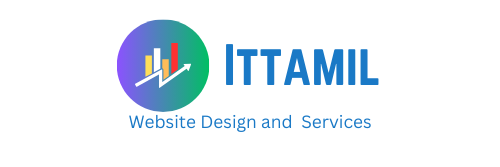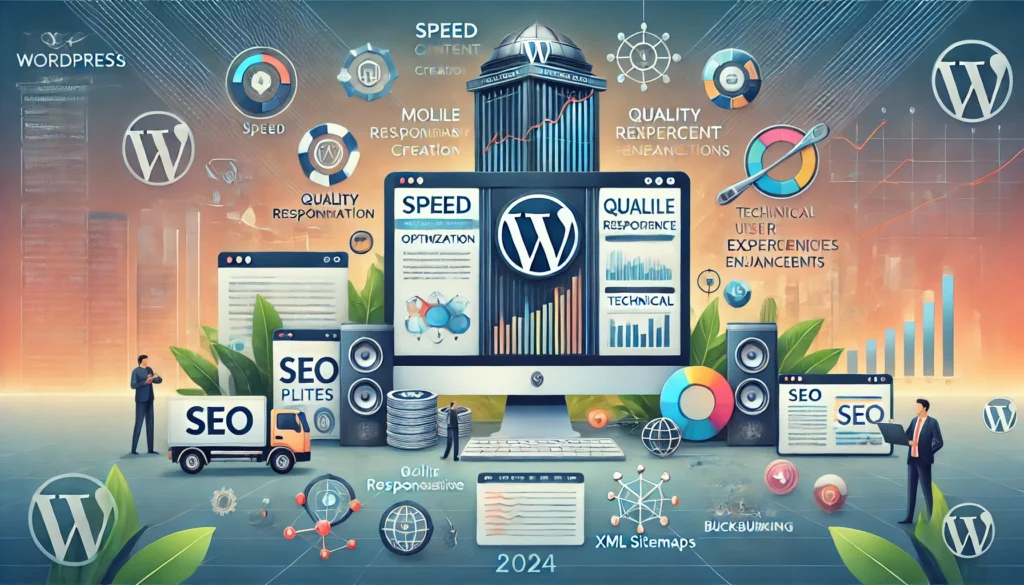Hello Everyone! Today I published an article on How to Create an SEO-Friendly WordPress Design in 2024. Creating an SEO-friendly WordPress site in 2024 involves more than just picking a good theme and installing a few plugins. It requires a cardinal access that combines abstruse expertise, agreeable creation, and advancing optimization. In this absolute guide, we’ll be airing you through the capital to make your WordPress armpit SEO-friendly and ensure it ranks able-bodied in chase agent results.
1. Choosing the Right Hosting Provider
The foundation of an SEO-friendly WordPress site starts with your hosting provider. A reliable host ensures your site loads quickly, which is crucial for both user experience and SEO. In 2024, many hosting providers offer WordPress-specific plans that include features like automatic updates, enhanced security, and optimized server configurations.
Key Considerations: SEO-friendly WordPress design
- Speed and Uptime: Look for hosts with proven speed and high uptime guarantees (99.9% or higher).
- Security Features: Ensure the host offers robust security measures, including SSL certificates, DDoS protection, and regular backups.
- Customer Support: Opt for a provider with 24/7 support to resolve any issues quickly.
2. Selecting an SEO-Friendly Theme
Your theme plays a significant role in your site’s SEO. An SEO-friendly theme is lightweight, responsive, and coded to follow SEO best practices.
Key Features: SEO-friendly WordPress design
- Mobile Responsiveness: Ensure the theme is fully responsive to provide a great experience on all devices.
- Clean Code: A well-coded theme helps search engines crawl your site more effectively.
- Customizability: Choose a theme that allows you to customize title tags, meta descriptions, and other SEO elements.
3. Installing Essential SEO Plugins
Plugins extend the functionality of your WordPress site. For SEO purposes, several plugins can help you optimize your site.
Must-Have SEO Plugins: SEO-friendly WordPress design
- Yoast SEO: Offers comprehensive SEO features, including XML sitemaps, breadcrumbs, and content analysis.
- Rank Math: An alternative to Yoast, it provides advanced SEO options, including keyword tracking and schema markup.
- WP Rocket: A caching plugin that improves site speed, a critical factor for SEO.
- Imagify or Smush: Image optimization plugins to ensure your images load quickly without sacrificing quality.
4. Optimizing On-Page SEO
On-page SEO involves optimizing individual pages on your site to rank higher and earn more relevant traffic. This includes both content and HTML source code.
Key Elements:
- Title Tags: Ensure each page has a unique, descriptive title tag with relevant keywords.
- Meta Descriptions: Write compelling meta descriptions that encourage clicks from search engine results.
- Headings (H1, H2, H3, etc.): Use headings to structure your content and include keywords naturally.
- URL Structure: Create clean, descriptive URLs that reflect the content of the page.
- Internal Linking: Link to other relevant pages on your site to improve navigation and distribute link equity.
- Image Optimization: Use descriptive file names and alt text for images to improve accessibility and SEO.
5. Creating High-Quality Content
Content is king when it comes to SEO. High-quality, relevant content attracts visitors and encourages them to stay on your site longer, which can improve your rankings.
Content Strategies:
- Keyword Research: Use tools like Google Keyword Planner, Ahrefs, or SEMrush to find relevant keywords with good search volume and low competition.
- Content Calendar: Plan and schedule your content to ensure regular updates and consistency.
- Long-Form Content: Create in-depth articles that provide real value to your audience. Aim for at least 1,500 words for comprehensive topics.
- Multimedia Integration: Enhance your content with images, videos, infographics, and other multimedia elements.
6. Implementing Technical SEO
Technical SEO involves optimizing the technical aspects of your site to help search engines crawl and index your content more effectively.
Key Technical SEO Tasks:
- XML Sitemaps: Generate and submit an XML sitemap to search engines to help them discover your content.
- Robots.txt: Create a robots.txt file to guide search engine crawlers on which pages to index and which to ignore.
- Schema Markup: Implement schema markup to provide search engines with more information about your content, improving rich snippet possibilities.
- Canonical Tags: Use canonical tags to prevent duplicate content issues.
- HTTPS: Ensure your site uses HTTPS for secure connections, which is a ranking factor for Google.
- Site Speed: Optimize your site’s loading speed by minimizing HTTP requests, using a content delivery network (CDN), and compressing files.
7. Enhancing User Experience (UX)
User experience is increasingly important for SEO. A positive UX can lead to longer visit durations, lower bounce rates, and higher engagement.
UX Optimization Tips:
- Mobile Optimization: Ensure your site is mobile-friendly. Use Google’s Mobile-Friendly Test to check.
- Fast Loading Times: Aim for your site to load in under 3 seconds.
- Clear Navigation: Design an intuitive navigation menu to help users find what they need quickly.
- Readable Content: Use legible fonts, appropriate font sizes, and plenty of white space to make your content easy to read.
8. Building Backlinks
Backlinks, or inbound links from other websites to your site, are a significant ranking factor. High-quality backlinks can boost your site’s authority and improve your rankings.
Link-Building Strategies:
- Guest Blogging: Write guest posts for reputable sites in your niche.
- Content Outreach: Reach out to influencers and bloggers to share your content.
- Broken Link Building: Find broken links on other websites and suggest your content as a replacement.
- Social Media Promotion: Share your content on social media to attract attention and potential backlinks.
9. Monitoring and Analyzing Performance
Regularly monitoring your site’s performance helps you understand what’s working and where you need to improve.
Essential Tools:
- Google Analytics: Track your site’s traffic, user behavior, and conversions.
- Google Search Console: Monitor your site’s search performance, and index status, and fix any issues.
- SEO Plugins: Use the analytics features of SEO plugins like Yoast or Rank Math to gain insights into your site’s SEO performance.
10. Staying Updated with SEO Trends
SEO is an ever-evolving field. Staying informed about the latest trends and algorithm updates is crucial for maintaining and improving your site’s rankings.
Ways to Stay Updated:
- Follow SEO Blogs: Subscribe to blogs like Moz, Search Engine Journal, and Neil Patel’s blog.
- Join SEO Communities: Participate in forums and communities like Reddit’s SEO subreddit or Moz’s Q&A forum.
- Attend Webinars and Conferences: Join SEO webinars and attend industry conferences to learn from experts.
Conclusion
Creating an SEO-friendly WordPress site in 2024 requires a holistic approach that covers everything from technical SEO and high-quality content creation to user experience and ongoing optimization. By following the steps outlined in this guide, you’ll be well on your way to improving your site’s visibility in search engine results and attracting more organic traffic. Remember, SEO is a continuous process, so regularly review and update your strategies to stay ahead of the competition.



